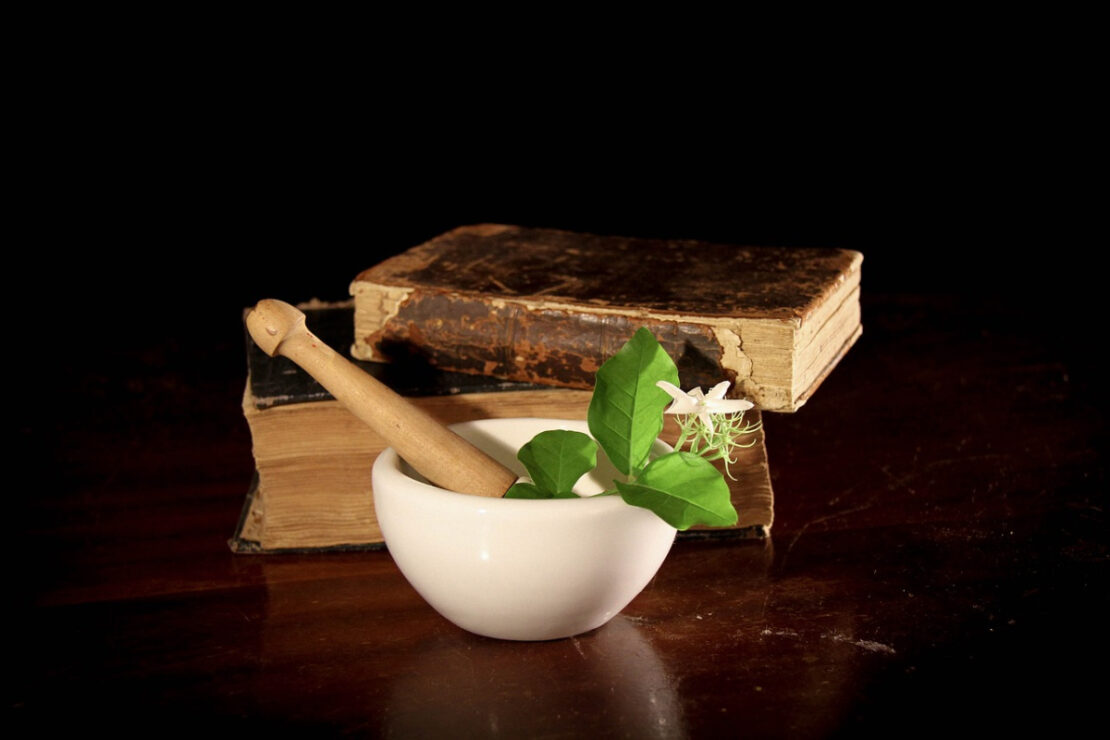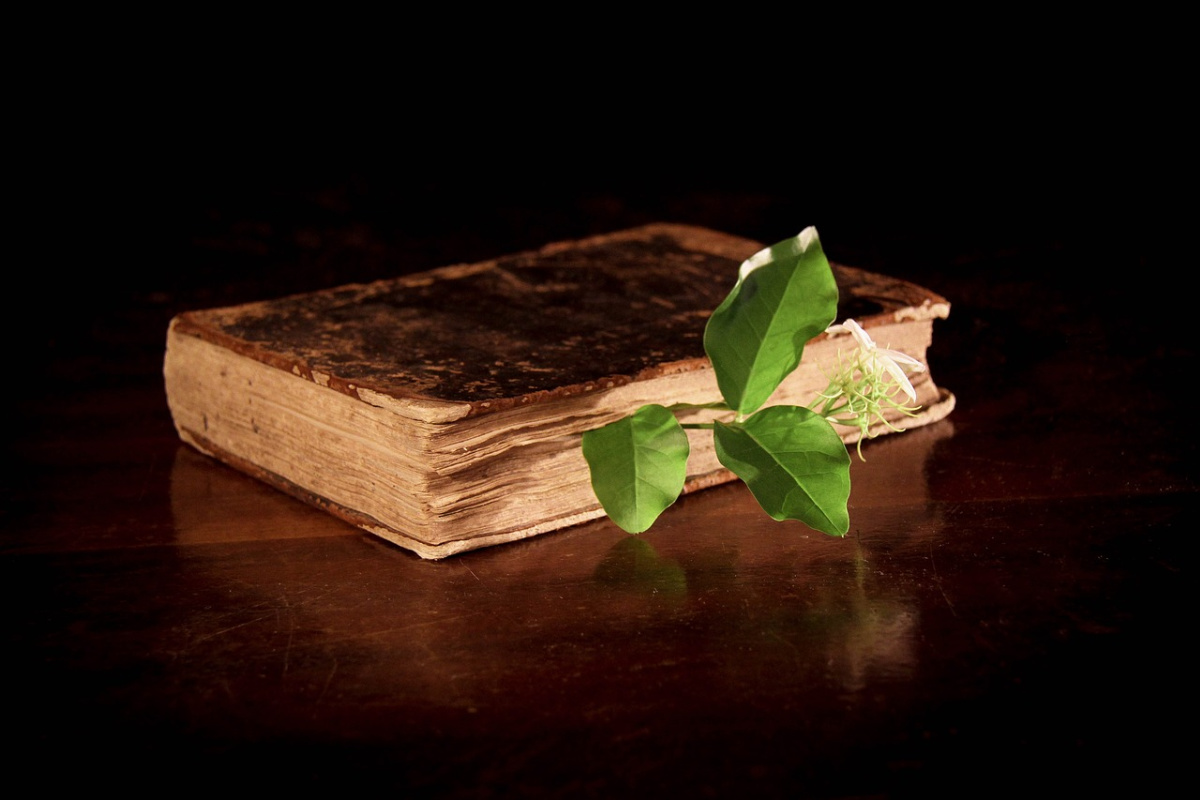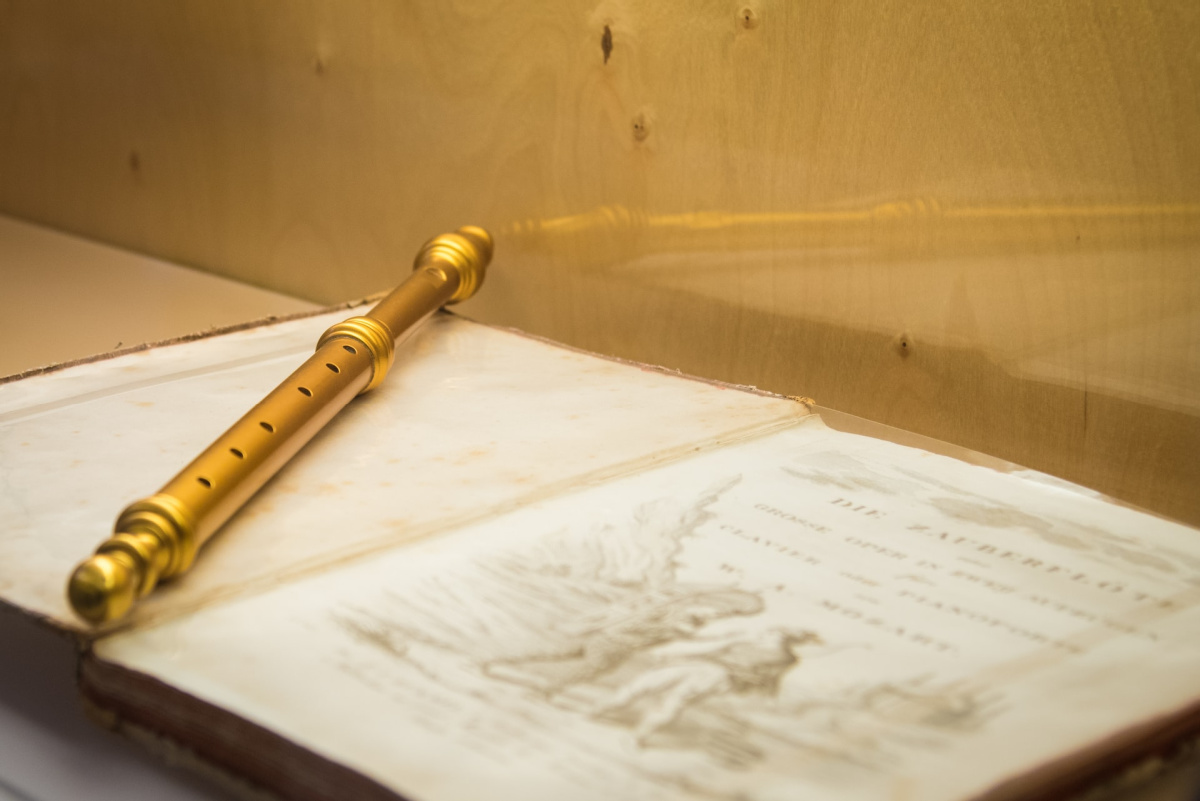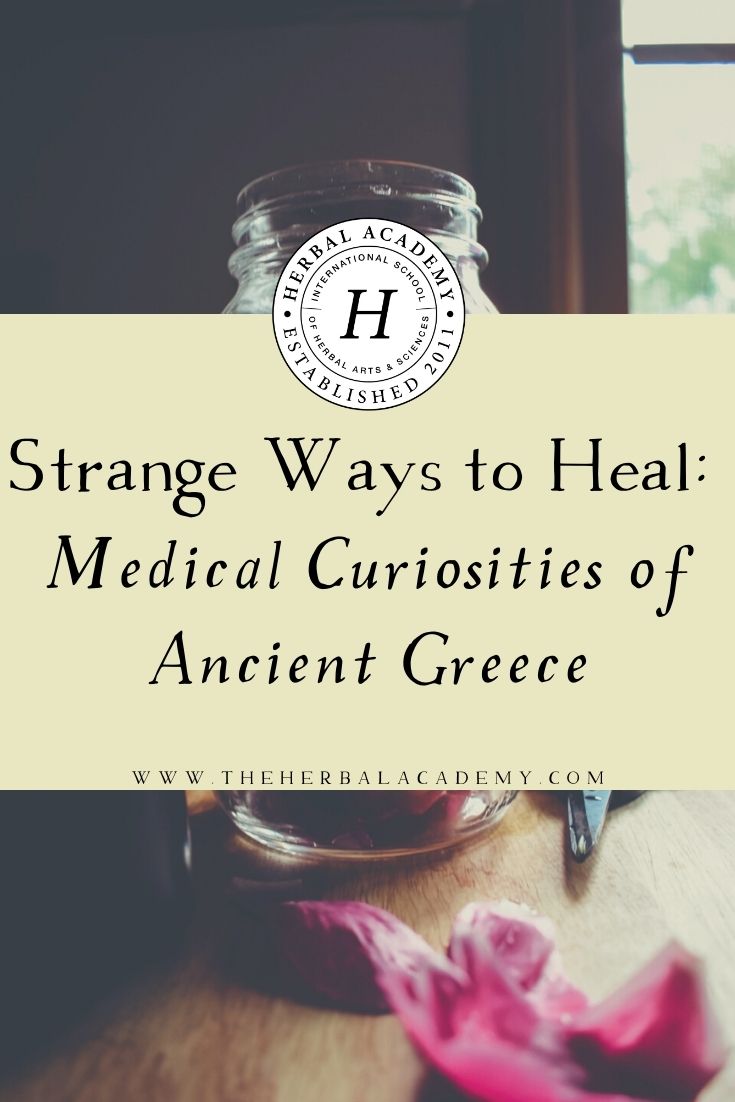
Strange Ways to Heal: Medical Curiosities of Ancient Greece
Throughout history, humans have sought ways to ease many ailments. Some lasted through millennia. Others fell into disuse. The ancient Greek civilization (c. 3,000 BCE-600 CE), practiced a variety of healing methods over centuries influenced by population growth, trade, and conflict throughout the Mediterranean region. Medicine in antiquity shifted and evolved as a result of changing needs, medical developments, and the exchange of cultural influences. Through surviving documents, we can examine some of the seemingly strange and curious ways to heal in ancient Greece.
Generally, medicine in Greek antiquity was a combination of applying nutrition, habits, herbal remedies, and surgery. Depending on the knowledge of the physician, and skill, the outcome varied greatly. Hippocrates (460-370 BCE), recognized for his influential work in medicine and philosophy, defined learning the art of medicine as that which “can be compared to the growing of plants.” He explains that “our natural aptitude is the soil; the instruction our teachers give us in the seeds; our basic education is the planting of the seeds at the right time; our place of study is the nutrients received by the seedlings from the surrounding air; [and] our hard work is the tending of the plants. Time ensures strong growth” (McKeown, 2017, p. 20). While his theory emphasized the importance of a good teacher and a strong dedication to the field, there is much evidence to suggest that ancient Greek medicine also involved non-medically defined strategies, including superstitions, dreams, and astrology.
Modern cultures may have plenty of these seemingly strange healing methods as viewed by future generations. It is difficult to know how these ancient methods resonated with the population at that time and if they were effective at all. But recognizing the creativity of these ways to heal certainly gives us a fresh perspective on the power of human creativity and imagination in devising health-promoting practices. Let’s explore some of the medical curiosities of the ancient Greek civilization, beginning with a touch of magic.

Superstitions, Incantations, and Sorcery
The magical realm of superstitions, incantations, and sorcery was a major part of ancient Greek herbal medicine. Magic, which can be both an action and a feeling, could be sparked by an intention, a prayer, or a request for an energetic influence outside human understanding. Those who worked directly with herbs in ancient Greece, particularly the “root cutters” (ῥιζοτόμοι / rhizotomoi) and the “drug sellers” (φαρμακοπῶλαι / pharmakopolai), believed in a powerful and unpredictable force governing nature. Both root cutters and drug sellers, who worked in the marketplace, or agora, shared a reputation of being highly knowledgeable about plant medicine, while at the same time viewed as untrustworthy, strange, and perhaps even ridiculous, particularly for some of their methods of harvesting and distribution. In his botanical textbook, Enquiry into Plants, Theophrastus (c. 370 – c. 287 BCE), writes that “some of the things that drug sellers and root cutters say are, I suppose, reasonable enough, but sometimes they make such a song and dance with their exaggerated claims…It seems incredibly far-fetched that, for example, peonies should be dug up only at night, for fear that, if a person is seen by a woodpecker while he is gathering their flowers, he risks going blind, whereas, if he is seen by a woodpecker while he is cutting the root, he may suffer a prolapsed anus” (1916/n.d., 9.8).
Through the ancient medical lens defined by doctors such as Hippocrates and Theophrastus, the medicinal benefits of a plant certainly could not be affected by when or how it was gathered. This superstition, however, was widely believed among their counterparts and closely tied to the magic that the plant supposedly held. Interpreting signs of nature as divine messages surely had to be taken seriously. As whom could know what the gods were trying to tell them? Or what disasters could be prevented if they took all the necessary, although seemingly bizarre, precautions? Who would dare take such a risk?
Let’s further explore the use of peony. Peony (Paeonia officinalis) was widely used for medicine and for magic. As medicine, a decoction of the root was used for inducing or regulating menstrual flow, easing inflamed kidneys and jaundice, soothing diarrhea, and helping remove the afterbirth after delivery (Dioscorides et al., 2000). These health benefits were not separated from its magical powers. Even centuries after Theophrastus shared his exasperation over the timing of the peony harvest, the physician Nicander (197-180 BCE) wrote in his medical text Theriaka that “the spongy roots of fresh-dug peony…” can be included in a recipe as “a general panacea” against all disasters (2nd century BCE/1953, p. 934-42). Even later, in De Materia Medica by Dioscorides (40-90 CE), peony was worn or carried on a person, to be “good against poisons, bewitching, fears, and devils and their assaults,” and where the plant grew on the mountain, especially “where there were devils, it drove them away” (Dioscorides et al., 2000, p. 530). This combination of medicine and magic could not easily be separated and was relevant to many of the plants applied to health in Greek antiquity.
There are many other examples.
According to Pliny (23-79 CE) in Natural History, “they say that mint will cure diseases affecting the spleen, provided that the patient tastes it in the garden, straight from the plant without plucking it, on nine consecutive days. As he chews it, he should declare that it is treating his spleen” (77/1952, p. 203).
In addition to superstition and magic, incantations and sorcery were also common practices. Verses sung in both public and private rituals were inscribed on amulets to protect against evil and bad luck. A common amulet inscription to help aid digestion was the Greek word “pesse,” meaning “digest,” written three times. Digestive ailments were a major concern and “the insistence on diseases originating in the belly may be partly due to the frequency of food poisoning and intestinal parasites” (Frankfurter, 2019, p. 442). Praying for good digestion meant praying for good health.
Ancient texts have also indicated the importance of incantations and prayers in making herbal preparations. The philosopher Plato (c. 427 BCE – c. 347 BCE) writes in his text Charmides, “so I told him that the thing itself was a certain leaf, but there was a charm to go with the remedy; and if one uttered the charm at the moment of its application, the remedy made one perfectly well; but without the charm there was no efficacy in the leaf” (5th century BCE/1955, 155e). While he does not specify the charm to be uttered, there are examples of these incantations in other texts, including in the Papyri Graecae Magicae, a collection of papyri from Graeco-Roman Egypt (c. 100 BCE – c. 400 CE) many of which were written in ancient Greek.
Perhaps the most superstitious practice of all was the practice of spitting, which “protects us against magic spells and the bad consequences of meeting a person who is lame in the right foot. It is customary to spit three times to ensure the efficacy of any medicine when it is being administered” (McKeown, 2017, p. 220). Whether sorcery or foolishness, who could say now if this did, indeed, work thousands of years ago?

Healing in Dreams
Even expert doctors say that we should pay close attention to dreams. -Aristotle On Prophecy through Sleep (463a)
Medicine in ancient Greece was also influenced by the dream world. Healing sanctuaries and shrines, particularly in honor of Asclepius, were located throughout the ancient Greek empire, with more than 700 sites identified by archaeologists (McKeown, 2017). These healing centers attracted pilgrims seeking support with a variety of ailments and personal problems. One of the most famous healing centers of Asclepius was located at Epidaurus, in the Peloponnese of Greece, where visitors can still visit remnants of the sanctuary buildings. Known as the god of medicine, Asclepius delivered his healing touch during sleep. In preparation, the patient completed a purification process, fasting one day and abstaining from wine, baths, and massages for three (Carod-Artal, 2013). The abaton was a special area of sanctuary for their “dream incubation,” where they would receive instructions and be cured during their sleep.
Archeological remains of stelae, large marble slabs, were uncovered at Epidaurus and revealed ancient Greek inscriptions detailing the treatment of the patient during their visit (Błaśkiewicz, 2014). Some of these remedies included references to herbal preparations; decoctions, ointments, and poultices, though none provide specific details on the herbs used (Błaśkiewicz, 2014). This is unfortunate for modern herbalists seeking to understand the healing practices of the ancient Greeks. But given that this was a sacred healing space with direct spiritual connection with Asclepius, these remedies prepared by priests were surely a sacred and mysterious part of the journey towards healing. The sick who traveled from near and far did not seem to doubt the god’s power to cure their pain.
Asclepius was the son of Apollo, god of the sun and prophecy, and Coronis, a mortal woman. In artwork, he is often depicted holding a rod with a sacred snake coiled around it, representing wisdom and healing. Asclepius had five daughters, each associated with a different element of health: Hygieia, goddess of cleanliness; Iaso, goddess of recovery; Aceso, goddess of the healing process; Aegle, goddess of good health; and Panacea, goddess of universal remedy. He and his daughters represented the complexity of medicine in ancient Greece and the broad and intentional approach of the ancient Greeks to achieve and maintain good health.
In addition to receiving sacred communication during sleep, the conditions of the sanctuaries also encouraged a connection with the divine self, the psyche, which “not only knows how to sustain physical, mental, emotional and spiritual well-being, but also has a divine connection to the healer god within” (Błaśkiewicz, 2014, p.56). The ancient Greeks understood the power of the innermost self to contribute to one’s own healing and the sanctuaries provided the conditions to achieve this inner work. It was this very combination of working with the divine god and the divine self that the ancient Greeks believed true healing comes from.

The Writing in the Stars
Astronomy does not play a small role in medicine, but a very large role. -Hippocrates, Airs, Waters, Places 2 (2.14, 16-18)
Ancient Greeks also applied meaning to the stars. Many ancient authors wrote about the connection between astronomy and medicine. Claudius Ptolemy (c. 100-178 CE), for example, was a famous mathematician, astrologer, and astronomer from ancient Alexandria in Egypt during the time of the Roman Empire. He wrote in his text Tetrabiblos, meaning “four books,” about the association between parts of the body and the celestial planets and stars. This popular text, written in ancient Greek, spread throughout the Mediterranean region for centuries after and included the following primary associations (3.12.147):
| Planet / Star | Body Part / Sense |
| Sun | sense of sight, brain, heart, and all body parts on the right side |
| Moon | sense of taste, stomach, womb, and all the body parts on the left side |
| Saturn | right ear, spleen, bladder, phlegm, and bones |
| Jupiter | sense of touch, lungs, arteries, semen |
| Mars | left ear, kidneys, veins, genitals |
| Venus | sense of smell, liver, and muscle |
| Mercury | sense of speech, reason, tongue, bile, and buttocks |
Ptolemy’s text included detailed analyses and descriptions of astral forces, including the Zodiac signs, with chapters entitled “Of the Power of the Planets,” “Of Bodily Injuries and Diseases,” “Of the Quality of the Soul,” and “Of the Quality of Death” (2nd century/1940). His ideas were considered respectable science well up until the Renaissance period, centuries after his death.
Earlier in antiquity, the unknown author of Regimen (c. 400 BCE), a text part of the Hippocratic Corpus, provided details about the connection of the body with astral cycles. Humans, they wrote, were “made in imitation of the whole” and therefore, health was related to the “correspondence between the structure of the microcosm and the macrocosm” (Jouanna, 2012, p. 195 and p. 222). The ancient Greek philosopher Plato (428-348 BCE) held similar theories in his text Timaeus, written c. 360 BCE, in which he describes how the soul travels in circular rotations similarly to the rotation of the planets. He further connects these rotations with the four humours of ancient Greek medicine. Thus, diseases of the soul could be attributed to an unhealthy state of the body in which the humours in the body were imbalanced and not in flow. Plato further argues that practicing unhealthy habits, and accumulating these humoral fluids in the body, could lead to ill effects on one’s intelligence.
While not much remains of these theories in modern herbal practices, the celestial influence of the ancient Greeks remains intact in many of the night sky constellations, forever rotating.

Other Curious Ways to Heal
Perhaps one of the more unexpected—and curious—methods of healing in ancient Greece was the incorporation of music. Music therapy was often applied to help ease both physical and mental pain. Soothing melodies of the flute, for example, were applied to cure viper bites or “when pain in the hips is particularly severe” (Gellius, 2nd century/1927, 13.3). While surely not a cure-all, the method of music therapy suggested that the human mind and the human body were intimately interconnected, and therefore there was an intimate link between physical and mental illnesses and their remedies.
Perhaps it is not surprising that Apollo was the ancient god of both music and healing. He was one of the twelve Olympians ruling from Mount Olympus in central Greece and in addition to music and health, he was also the god of prophecy, archery, the sun, and the arts. Music was sung in ancient Greece during celebrations of harvest and health, in rituals for protection against disease, and in gratitude for the passing of misfortunes. Honoring the god for his divine hand in human health with the melodic sounds of ancient instruments and voices was a practice that could surely support the healing of any ailment.
In Closing,
The ancient Greeks relied on a variety of healing methods to ease their pain and suffering in the world. While none of these remedies can be cure-alls in modern-day use, they do offer a glimpse into how ancient humans strove for good health and good fortune. The combination of magical superstitions, dreamworld cures, astronomy, and music in ancient medicine and herbalism perhaps can help modern herbalists and holistic practitioners consider the possibilities of health and healing in a world that continues to rotate around the same aspirations.
For more on the history and mythology of herbs, see:
The History, Mythology, and Offerings of Hawthorn

REFERENCES
Carod-Artal, F. (2013). Psychoactive plants in ancient Greece. Neurosciences and History, 1(1): 28-38.
Błaśkiewicz, M. (2014). Healing dreams at Epidaurus: Analysis and interpretation of the Epidaurian iamata. Miscellanea Anthropologica et Sociologica 15 (4): 54–69.
Dioscorides, P., Osbaldeston, T. A., & Wood, R. P. (2000). De materia medica: Being an herbal with many other medicinal materials: written in Greek in the first century of the common era: a new indexed version in modern English. Johannesburg: IBIDIS.
Gellius, C. (1927). Attic nights. (J. Rolfe, Trans.). Cambridge, MA: Loeb Classical Library. (Original work published 2nd century).
Kotansky, R. (1991). Incantations and prayers for salvation on inscribed Greek amulets. In C. Faraone & D. Obbink (Eds.). Magika Hiera: Ancient Greek magic & religion. (pp. 107-137). New York: Oxford University Press.
Frankfurther, D. (2019). Guide to the study of ancient magic (religions in the Graeco-Roman world). Leiden: Brill.
Jouanna, J. (2012). Greek medicine from Hippocrates to Galen. Leiden, The Netherlands: Brill.
McKeown, J.C. (2017). A Cabinet of ancient medical curiosities. New York: Oxford University Press.
Nicander of Colophon. (1953). Theriaka. (A. Gow & A. Scholfield, Trans.). (Original work published 2nd century BCE). Retrieved from http://attalus.org/poetry/theriaca.html
Plato. (1955). Plato in twelve volumes. (W.R.M. Lamb, Trans.) Cambridge, MA: Harvard University Press. (Original work published 5th century BCE). Retrieved from http://www.perseus.tufts.edu/hopper/text?doc=Perseus%3Atext%3A1999.01.0176%3Atext%3DCharm.%3Asection%3D155e.
Pliny the Elder. (1950). Natural history. (H. Rackham, W.H.S. Jones, and D. Eichholz, Trans.). Cambridge: Harvard University Press. (Original work published 77 CE).
Ptolemy, C. (1940). Tetrabiblos. (F. E. Robbins, Trans.). Cambridge, MA: Harvard University Press. (Original work published 2nd century CE).
Scarborough, J. (1991). The pharmacology of sacred plants, herbs, and roots. In C. Faraone & D. Obbink (Eds.). Magika Hiera: Ancient Greek magic & religion. (pp. 138-171). New York: Oxford University Press.
Theophrastus. (1916). Enquiry into plants (Vol. I, books 1-5). (Hort, A.F., Trans.). Cambridge: Harvard University Press. (Original work published n.d.).








